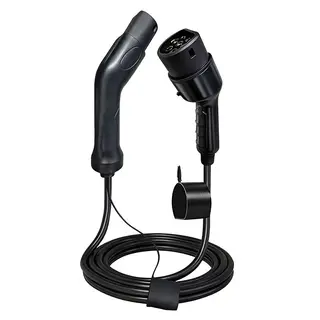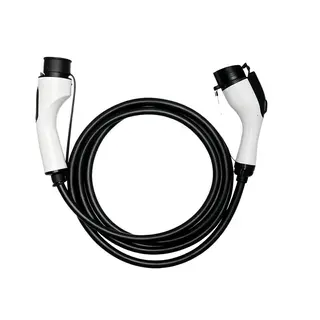In today's era of growing environmental awareness, electric vehicles are gradually becoming one of the preferred modes of transportation. However, with the popularity of electric vehicles, the safety and reliability of charging facilities have also become a focus of attention. As the "energy supply stations" for electric vehicles, outdoor charging stations' protection levels and daily maintenance are particularly important. Today, we will take an in-depth look at the protective design of outdoor charging stations and how to ensure their safe and stable operation.
When we mention the protection rating of outdoor charging stations, we often hear the term "IP54." So, what exactly does IP54 mean? In fact, IP54 is an internationally recognized protection standard that can effectively resist the intrusion of dust and water, providing solid assurance for the normal operation of charging stations under various complex climatic conditions.
In terms of dust protection, IP54-rated charging stations perform exceptionally well. They prevent harmful dust from entering the internal system, which is crucial for the stable operation of the station. If dust accumulates inside the charging station in large amounts, it may cause circuit short circuits, poor contact, and other problems, affecting charging efficiency and even creating safety hazards. An IP54-rated charging station acts like a sturdy "protective shield," keeping dust out and ensuring that internal components are always in good working condition.
In addition to dust protection, IP54-rated charging stations also perform well in water resistance. They can withstand water droplets falling from any direction, which means the station can operate normally even in rainy weather. This is a huge advantage for outdoor charging stations because outdoor environments are complex and variable, and rain is an inevitable natural factor. With such waterproof design, users do not need to worry about charging station failures caused by water ingress, greatly enhancing user safety.
In addition to the protective design of the charging station itself, the charging ports of electric vehicles also adopt multiple clever designs to ensure charging safety. The charging port is recessed and inclined, surrounded by insulating seals, and has drainage holes at the bottom. The advantage of this design is that even if a small amount of rainwater enters the charging port, it will not flow upward; the water will flow out smoothly through the bottom drainage holes. This greatly reduces the risk of rainwater entering the vehicle's internal circuitry and causing faults, providing dual protection for electric vehicle charging safety.
To ensure that charging stations are always in good working condition, regular inspections and maintenance are essential. Common inspection and maintenance methods include:
Appearance Inspection: By carefully observing the external appearance of the charging station, we can promptly discover obvious physical damage, detachment, or abnormalities, such as worn cables or loose plug connections. These seemingly minor issues, if not addressed in time, may lead to larger faults. Therefore, regular inspection of the charging station's appearance is crucial for ensuring its normal operation.
Fault Alarm System: Charging stations are usually equipped with fault alarm systems. By checking alarm information, we can quickly determine whether the problem is caused by the equipment itself or by improper user operation. This system acts like the station's "intelligent doctor," issuing timely warnings to alert us to potential fault risks and allowing us to take appropriate measures.
Electrical Parameter Measurement: Using tools such as voltmeters and ammeters to measure the electrical parameters of the charging station allows us to compare the results with normal value ranges to determine if there are electrical faults. This method enables us to understand the electrical status of the charging station more accurately, promptly detect and resolve electrical issues, and ensure safe operation.
Controller Inspection: The controller in the charging station is one of its core components and usually has a self-check function. We can connect it to a computer for software inspection, check the working status and parameters of the controller, and determine whether there are controller faults. The normal operation of the controller is crucial for the stable functioning of the charging station, so regular controller inspection is very necessary.
Connection Inspection: Check the connection between the charging station, power supply, and user vehicle to ensure good connection, avoiding charging faults caused by poor or disconnected connections. Good connections are the foundation for smooth charging, and any connection problem may lead to charging interruptions, reduced efficiency, or even safety hazards.
Fault Code Interpretation: According to the fault code manual of the charging station equipment, interpret and analyze the fault codes displayed on the station screen to determine the specific type of fault. Fault codes act like the station's "SOS signals," allowing us to quickly locate fault points and take effective repair measures.
Timely Repair: If a charging station fault is discovered, it should be repaired promptly to ensure normal operation. Timely repair not only fixes faults but also prevents them from worsening, reducing repair costs and time.
Safety Performance Check: Regularly check the charging station's safety performance, including electrical safety, lightning protection, and protective devices. During operation, the station generates some heat, which requires temperature control to avoid overheating faults. Based on the station's usage frequency and working environment, establish a regular maintenance plan for necessary upkeep and inspections. Monthly safety inspections and maintenance of the charging station are recommended.
When using a vehicle charging station, there are also some important precautions to ensure the safety and effectiveness of the charging process. Common precautions include:
Before using the charging station, be sure to read and understand its operating guide. Different models and brands may have different operating steps and requirements. Understanding these guides helps us use the station correctly, avoiding faults or hazards caused by improper operation.
Before charging, carefully check the charging station and cables for damage, wear, or other issues. If any problems are found, do not use the station to avoid faults or hazards. Ensure that your EV charging port is compatible with the station. Different EV brands and models may require different types of connectors. Ensure the charging plug is correctly inserted into the vehicle's charging port and that the connection is secure. Follow the station's operating guide to complete the connection.
When using the charging station, ensure no objects interfere with the charging process, and maintain a safe distance to prevent electric shock. Avoid excessive pulling or bending of the charging cable to prevent damage to the cable or station. Regularly inspect cables and connectors to ensure they are in good condition and not damaged or aged.
Do not place objects around the charging station that could block ventilation holes to prevent overheating. If the charging station has time limits, comply with them to avoid staying too long after charging is complete. Ensure that your parking and charging location complies with local regulations. Do not park in areas where charging is prohibited.
Before removing the charging plug, be sure to turn off the station's power to prevent current flow and maintain safety. Charging stations typically provide safety indicators and emergency stop buttons. In emergencies, take appropriate action immediately.
If you own a charging station, perform regular maintenance and inspections to ensure proper operation. If problems or safety concerns arise, seek help and advice from professional electricians or the charging station supplier.
As the "energy supply stations" for electric vehicles, outdoor charging stations' protection level and daily maintenance are crucial for ensuring charging safety. IP54-rated stations can effectively resist dust and water intrusion, ensuring normal operation under various climatic conditions. Regular inspections and maintenance allow timely detection and resolution of potential issues, extending the station's service life and improving its performance. Meanwhile, paying attention to important precautions during use ensures a safe and effective charging process. Only in this way can we truly enjoy the convenience and environmental benefits brought by electric vehicles, making green travel safer and more reliable.
In short, the safe operation of outdoor charging stations relies on scientific design, regular maintenance, and correct usage. Let us work together to support the popularization and development of electric vehicles and contribute our share to a greener planet.



